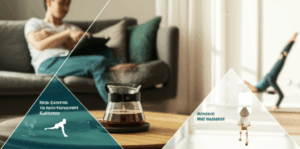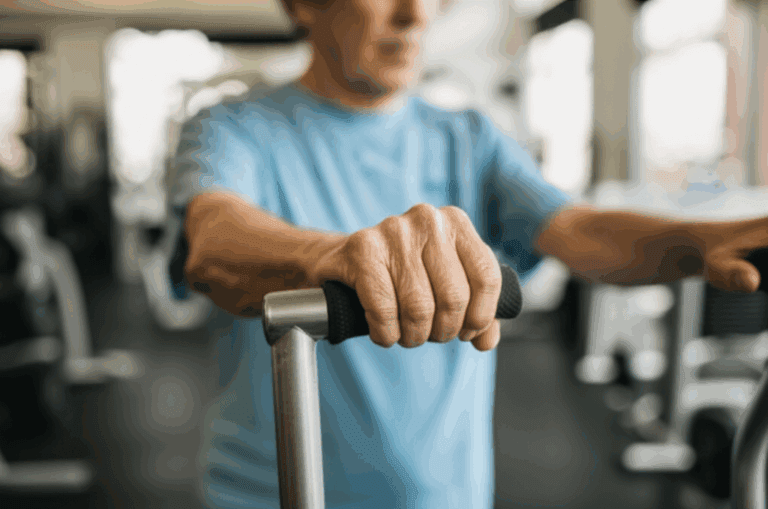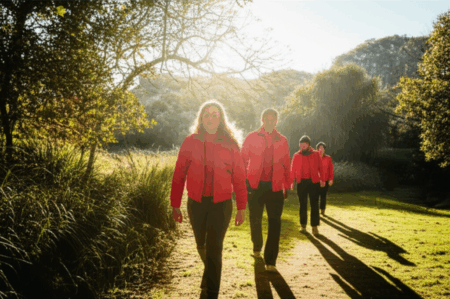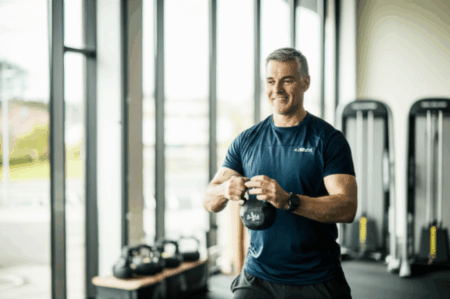As the years pass, maintaining an active lifestyle becomes not just beneficial, but essential for preserving independence, enhancing quality of life, and promoting overall well-being. While aging brings natural physiological changes, a well-designed fitness routine can mitigate many of these effects, allowing you to stay strong, mobile, and mentally sharp for years to come. It’s never too late to start reaping the profound benefits of regular physical activity.
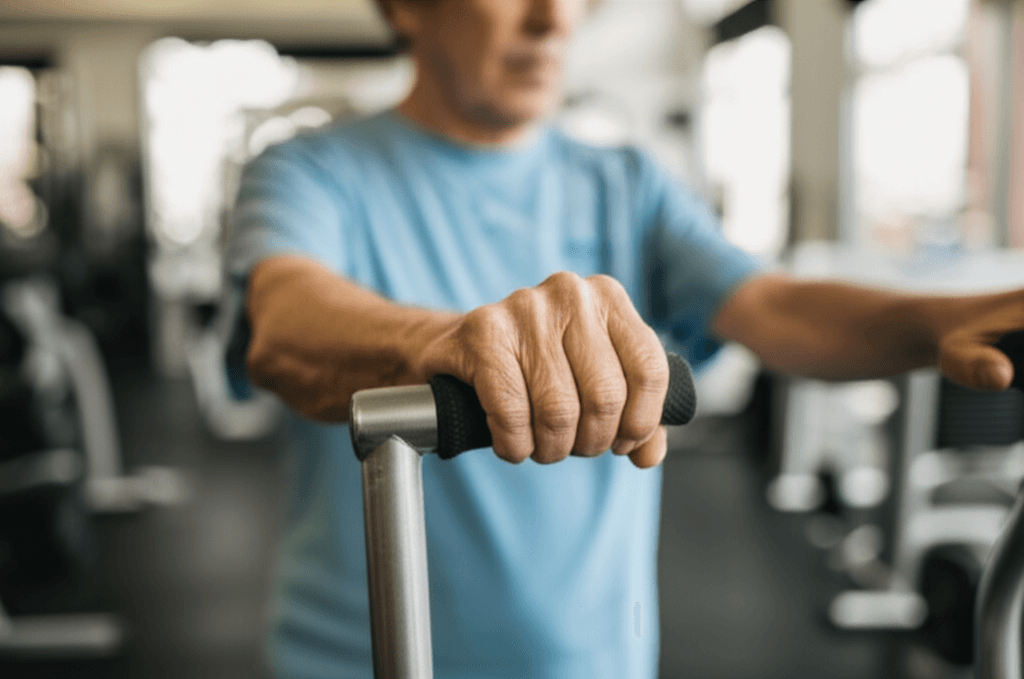
Why Fitness Matters More As You Age
Regular exercise offers a multitude of advantages that become increasingly crucial with age. It’s often referred to as “the closest thing we’ve found to a magic pill for combating the effects of aging.”
Physical Benefits
- Increased Energy Levels: Consistent physical activity can boost your energy and combat age-related fatigue.
- Reduced Risk of Chronic Diseases: Exercise helps prevent or lessen the symptoms of common conditions such as heart disease, stroke, type 2 diabetes, high cholesterol, and certain cancers.
- Stronger Bones and Muscles: Regular strength training and weight-bearing exercises counteract the natural decline in muscle mass (sarcopenia) and bone density, reducing the risk of weakness and fractures.
- Improved Joint Health and Mobility: Exercise can reduce joint pain and stiffness, improving overall flexibility and range of motion. Low-impact activities are particularly beneficial for aging bodies to avoid injury or joint pain.
- Better Balance and Reduced Fall Risk: Strengthening muscles and improving coordination significantly lowers the risk of falls, which can be particularly dangerous for older adults.
- Weight Management: Exercise helps burn calories and maintain a healthy weight, which can become more challenging as metabolism slows with age.
Mental and Cognitive Benefits
- Boosted Brain Health and Cognitive Function: Physical activity is vital for brain health, potentially slowing brain aging by up to 10 years and improving memory and cognitive function.
- Improved Mental Health and Mood: Exercise releases endorphins, reducing stress, anxiety, and depression, and promoting a general sense of well-being.
- Better Sleep Quality: Regular physical activity can lead to better quality sleep.
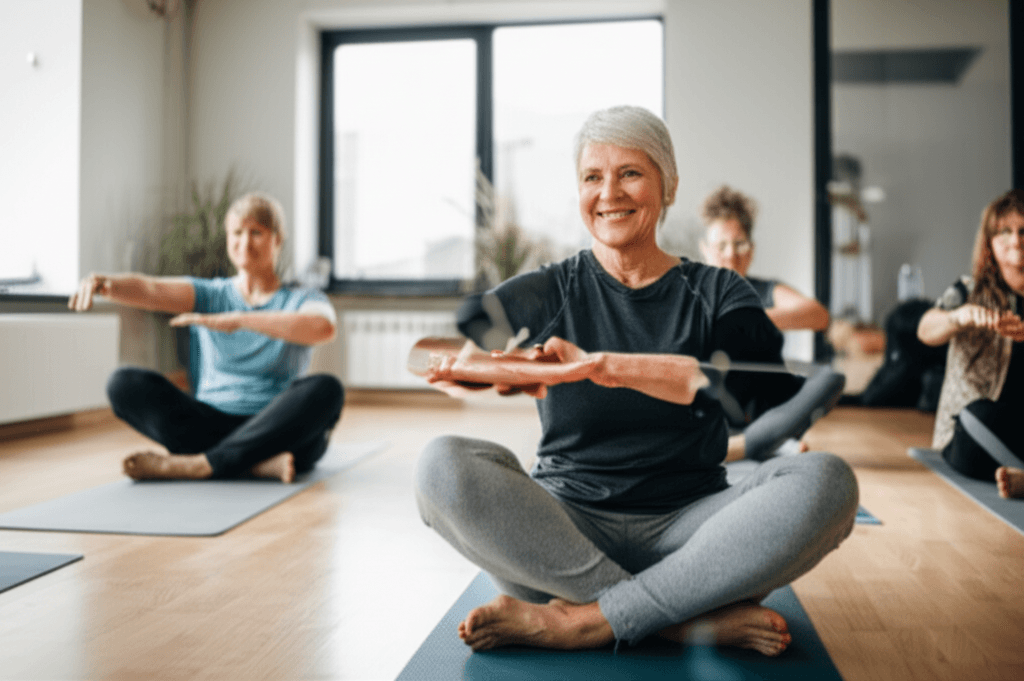
Key Considerations for an Age-Appropriate Routine
As you design your fitness plan, it’s important to acknowledge how your body’s needs might have changed.
Consult Your Doctor First
Before starting any new exercise routine, especially if you have chronic conditions or haven’t been active in a while, it is crucial to consult your healthcare provider. They can assess your current fitness level and advise on safe and effective exercises, potentially adjusting activities to reduce strain.
Focus on Low-Impact Activities
Low-impact exercises are gentle on joints while still providing significant cardiovascular and strength benefits. These are often recommended for older adults who may have arthritis or joint issues.
Listen to Your Body
It’s essential to recognize signs of exhaustion, such as fatigue or dizziness, and stop exercising immediately if they occur. Avoid pushing yourself to the point of exhaustion or injury. Recovery times may also be longer as you age, so incorporate rest days.
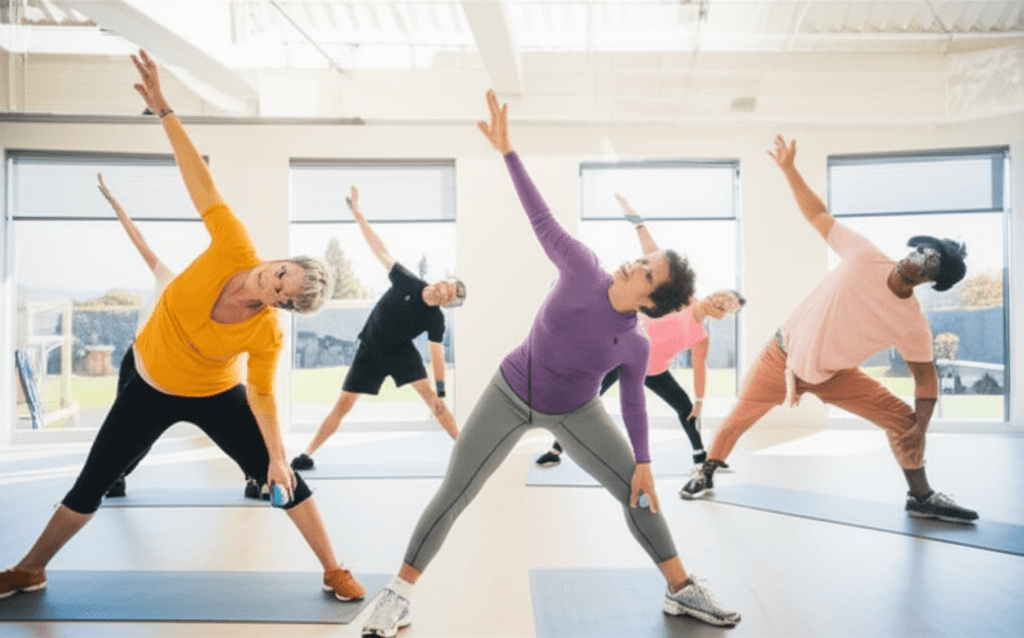
Essential Components of a Senior Fitness Routine
A well-rounded fitness routine for older adults should incorporate a variety of exercise types to target different muscle groups and improve various aspects of physical health.
1. Aerobic (Cardiovascular) Exercise
These activities get your heart pumping and improve cardiovascular health, lung function, and circulation. The CDC recommends at least 150 minutes per week of moderate-intensity aerobic activity, or 75 minutes of vigorous-intensity activity. This can be broken into 10-15 minute chunks throughout the day.
- Brisk Walking: A low-impact and accessible option that can be adjusted to your pace.
- Swimming and Water Aerobics: Excellent for a full-body workout, improving cardiovascular health, and are easy on the joints due to the water’s buoyancy and resistance.
- Cycling: Both outdoor biking and stationary bikes provide a low-impact cardiovascular workout.
- Dancing: A fun way to get your heart rate up and improve coordination.
2. Strength Training
Strength training is vital for maintaining and building muscle mass, which naturally decreases with age. It also helps improve bone density and boost metabolism. Aim for at least two days a week of muscle-strengthening activities.
- Bodyweight Exercises: Simple and effective, these can include wall push-ups, chair squats (sit-to-stands), calf raises, and seated leg lifts.
- Resistance Bands: Inexpensive and versatile tools for challenging muscles at home.
- Light Hand Weights: Can be used for exercises like bicep curls and shoulder presses.
- Pilates: A low-impact exercise emphasizing breathing, alignment, concentration, and core strength, which can improve balance and flexibility.
- Chair Yoga: A gentle form of yoga that improves muscle strength, mobility, balance, and flexibility with less stress on joints.
3. Balance Exercises
Improving balance is crucial for preventing falls and enhancing overall stability, coordination, and confidence.
- Standing on One Foot: Use a wall or sturdy surface for support if needed.
- Heel-to-Toe Walking: Walk by placing the heel of one foot directly in front of the toes of the other.
- Tai Chi: A low-impact mind-body exercise known for improving balance, flexibility, and muscle strength.
4. Flexibility Exercises
Stretching helps maintain and improve range of motion, reduces stiffness, and prevents injuries in both workouts and daily activities.
- Dynamic Warm-ups: Light movements like marching in place or arm circles before a workout.
- Static Stretches: Holding stretches for 20-30 seconds after a workout, such as neck stretches, shoulder rolls, or calf stretches.
- Yoga: A holistic approach that builds muscle strength, balance, core stability, mobility, and flexibility.
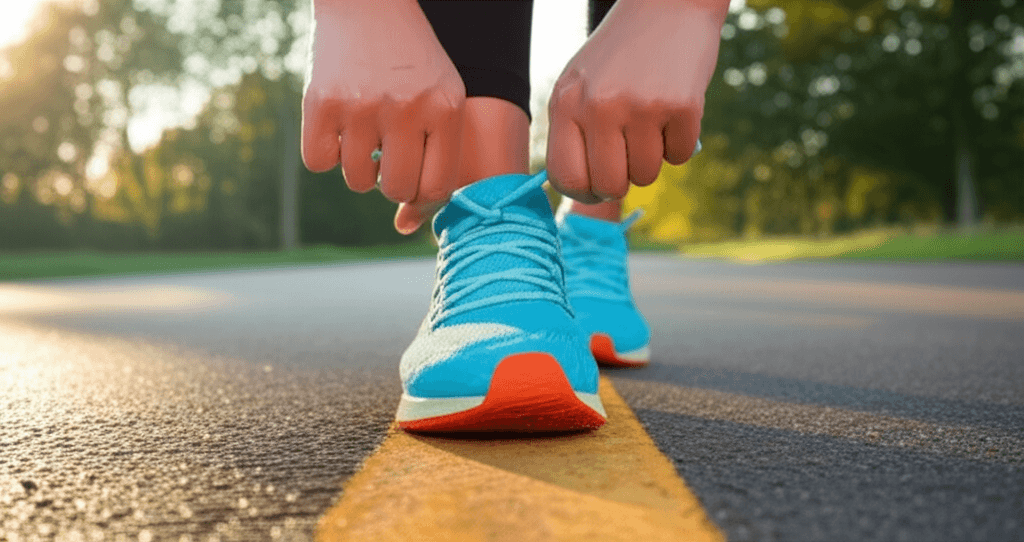
Tips for Getting Started and Staying Consistent
Starting a new routine can be challenging, but consistency is key to long-term success.
Start Slowly and Progress Gradually
Ease into your workout program, especially if you’re new to exercise. Begin with lower-intensity activities and gradually increase the frequency, intensity, and duration over weeks or months to build confidence and avoid injury.
Make it Enjoyable
Choose activities you genuinely like, as this makes it easier to stay consistent and can turn exercise into something to look forward to. Consider joining group classes or finding an exercise buddy for social support and accountability.
Incorporate Activity into Your Daily Life
Even small amounts of activity add up. Take the stairs instead of the elevator, park farther away, or take short walks during breaks.
Hydrate and Nourish Your Body
Drink plenty of water before, during, and after exercise, as older adults are more susceptible to dehydration. A balanced diet is also essential to support energy levels and muscle recovery.
Prioritize Warm-ups and Cool-downs
Always begin with a 5-10 minute warm-up of light activities to prepare your body, and end with a cool-down of gentle stretches to relax muscles and lower your heart rate.
Monitor Your Progress
Tracking your workouts, whether with a journal or an activity tracker, can provide motivation and show you how far you’ve come.
Be Patient and Persistent
Building fitness takes time and consistent effort. Don’t get discouraged by slow progress. Even on low-energy days, a short, light workout is better than none. Consistency, rather than intense, sporadic efforts, yields the best long-term results.
By adopting a comprehensive and mindful approach to your fitness routine, you can harness the power of exercise to support a vibrant, healthy, and independent life for many years to come.


